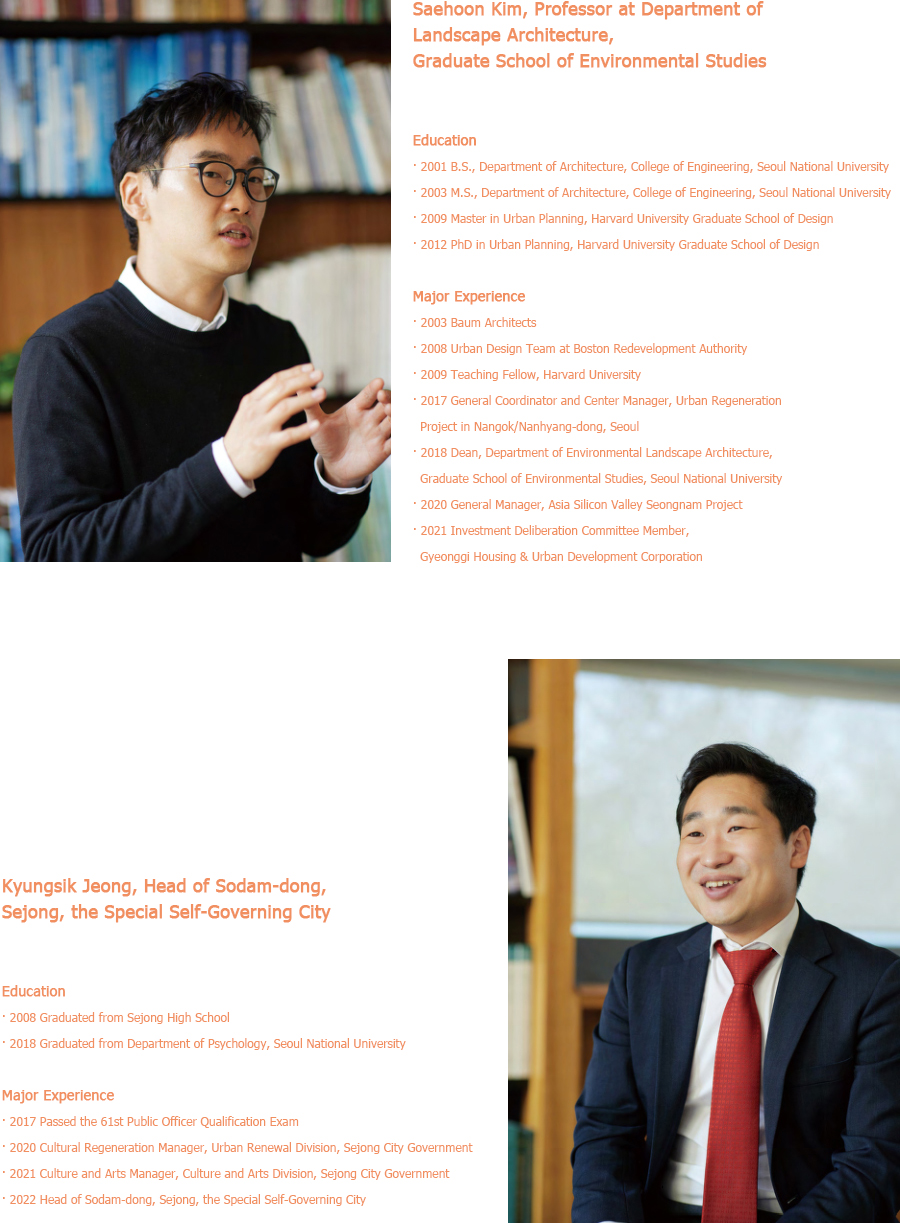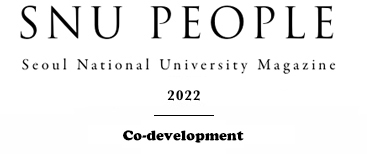Cover
Story
Towards Tomorrow`s
City of Togetherness
Saehoon Kim, Professor at Department of Landscape Architecture,
Graduate School of Environmental Studies
Kyungsik Jeong, Head of Sodam-dong, Sejong, the Special Self-Governing City
According to the 2021 Social Indicators in Korea released by Statistics Korea, the population of the metropolitan area last year was about 26.05 million, which is equivalent to 50.4% of the total population (51.64 million). Considering that the metropolitan area accounts for only 11.8% of the total land area in South Korea, a huge portion of the population is being concentrated in the metropolitan area. As a result, the city has encountered various problems, such as social polarization, conflicts between residents, and job creation. How can we create a city where people live together happily? A conversation was held between Professor Saehoon Kim from the Department of Landscape Architecture and Rural System Engineering, who is studying urban regeneration, and Kyungsik Jeong, who took office as the Head of Sodam-dong, Sejong, the Special Self-Governing City last January at the young age of 33, to discuss this issue.
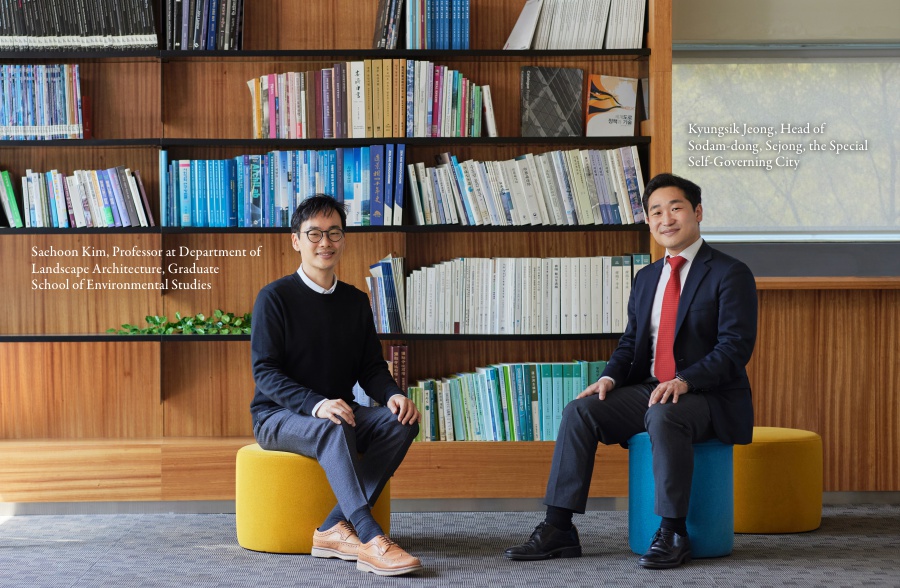
Urban Software Completed in Collaboration
between Administration and Communities
Saehoon Kim: Urban development in South Korea, particularly new town development, proceeds in the form of a project to achieve policy objectives under government leadership. This approach has enabled district designation on a large scale, and related processes, such as development and lotting, can now proceed in a considerably short period of time. As a result, these cities are built as hardware with a lack of software, culture, or content for the people who live in them. The problem here is that it's really hard to build software in a city. вҖңUrban maturation,вҖқ in which city members work together and a market is formed above a certain size, must take precedence.
Kyungsik Jeong: I have also yearned for a unique village culture in Sodam-dong. Sejong City, a new town, still gives the feel of a вҖңgray cityвҖқ because of the problems you mentioned. Despite the well-established infrastructure, there is a lack of uniqueness. In particular, Sodam-dong was a quiet residential neighborhood with no distinctiveness, unlike neighboring villages where government buildings and research complexes were clustered. The local residents, who were empathetic to this need, were supportive of my campaign promise to add culture to Sodam-dong.
Kim: Because matters regarding cities and residential environments are related to real estate issues, it may be problematic that decisions surrounding new town development are made from a viewpoint of profit rather than from a long-term perspective. To be fair, building a city is a type of business, and the power of capital is required to meet its feasibility criteria. However, this consideration should not extend to how we fill the city. There is a primary need for the city`s members to build a better city.
Jeong: You are absolutely right. Because I grew up in Jochiwon-eup, Sejong City is special to me. Before taking office as the Head of Sodam-dong, I worked at the Urban Renewal Division of the Sejong City Government, where I was in charge of revitalizing the vicinity of the wastewater treatment plant located in Jochiwon-eup. Although this site had been used as a water treatment plant for 78 years starting in 1935, after losing its original function, the nearby area turned into skid row and thus required certain changes. Because the cafГ© trend at that time was to repurpose abandoned factories into hotspots, I wanted to convert this place into a cafГ©, but I encountered many oppositions. After many discussions, the cafГ© was able to open, and we built up the Jochiwon Cultural Garden by annexing spaces, such as a neighborhood park, a community space, and a nearby fountain. It has now become a hotspot for many visitors. As the process was proud and rewarding, yet very demanding, without my affection for Jochiwon-eup, I would not have been able to do it.
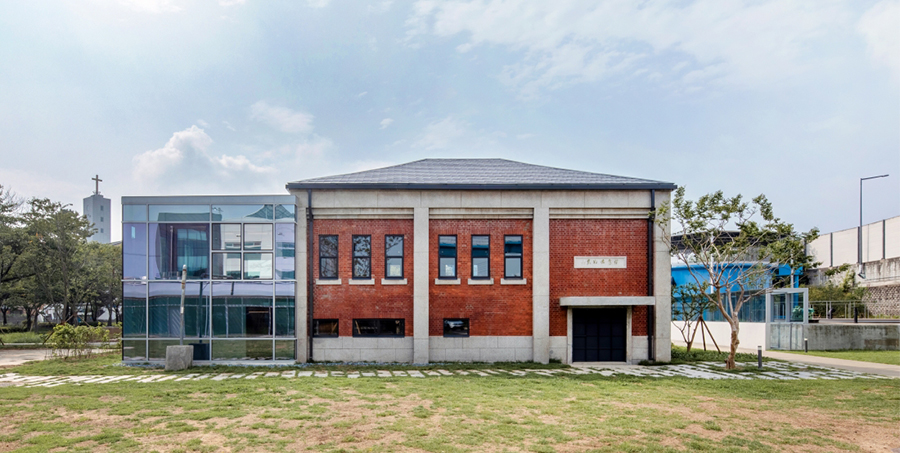
Jochiwon Cultural Garden, located in Pyeong-ri, Jochiwon-eup. The wastewater treatment plant was converted into a cafГ©, which was created as a complex cultural space equipped with exhibition spaces and youth workshops. в“’ EMA Architects & Associates
A Community Village
up to the City's Potential
Kim: Your affection for your hometown allowed you to realize your plan. Such a plan would not have taken shape in other areas. In South Korea, the work of the public and the private sectors is clearly divided in regional development. The private sector must work with the public sector to further projects, and public investment must play a key role in developments in the private sector, which is not possible in our current system. In this regard, let me take the case of San Francisco, USA as an example. The total GDP of San Francisco, where Silicon Valley is located, has soared since the 1990s, when the IT industry and venture companies migrated there. As the standards of living have risen, house prices have skyrocketed, thus turning it into a place where low-skilled workers, refugees, and people of color cannot live. Meanwhile, a non-profit organization made a plan to build a rental manufacturing complex, demanding a tax benefit in return for hiring residents from low-income households. Thus, the number of jobs increased, which also attracted more external investments. As this plan stabilized people's livelihoods, this city has begun to flourish. Likewise, for-profit and non-profit private companies, administrative agencies, and local communities should gather to come up with a long-term plan and establish a system to sustain the city.
Jeong: As you said, sustainability is crucial. Although we created the Jochiwon Cultural Garden, we were at a loss as to how to operate it after the city government financed it. After exchanging ideas with people from various fields, we ultimately found that the answer is local residents. If local residents frequent the space, ponder ways to improve it, and make efforts to improve the direction of its maintenance, the effects could extend to tourists and floating populations commuting to and from the area, in addition to the settled population. Furthermore, institutional support must be provided to trigger these activities. Sejong City Government, which has been implementing participatory budgeting and resident council systems, is considering ways to encourage more people to participate.
Kim: We need to ponder how to change the cities and who should take the lead in changing the local communities from scratch. When we think of a вҖңvillage,вҖқ we often consider only its residents; however, the вҖңrelational population,вҖқ who frequently comes and goes without living in the area, has been increasing as transportation has developed. The population living in Seoul is steadily decreasing, while the relational population is escalating. Because the relational population also consists of valuable members of the city, we need to listen to their voices and consider whether the opinions of the resident council are overrepresented in decisions about changes to cities. A вҖңcity like a marshmallowвҖқ will be a good city. Like a marshmallow, which is hard on the outside and soft on the inside, a city must be continuously open to various changes, allowing its members to change it on the inside without altering the established shape of the city on the outside. I think you are highly concerned about such a change.
Jeong: I agree. The more I work, the more challenging I find it to build up a good city. My recent interest in public design led me to form the Public Design Team with the children of Sodam-dong. This project aims to encourage children to propose ideas under the theme of вҖңSafe Crossing Made Together,вҖқ after which the Hongik University School of Architecture, located in Sejong City, forms them into feasible designs alongside the children. In this manner, we plan to continue providing programs that motivate citizens to participate in changing the village.
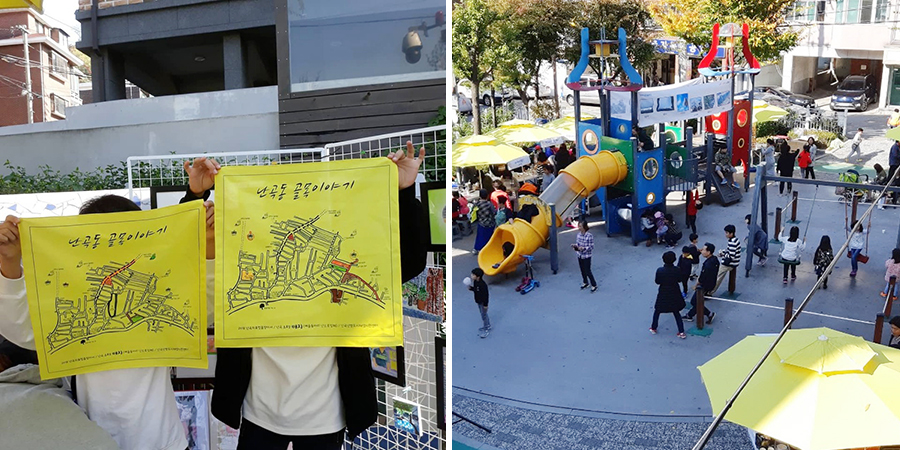 The Urban Studies and Design Lab opened the Nangok-Nanhyang Urban Regeneration Support Center in 2017, allowing residents to improve their living environment on their own. в“’ Naver BAND by Nangok-Nanhyang Resident Council on Urban Regeneration Support Center
The Urban Studies and Design Lab opened the Nangok-Nanhyang Urban Regeneration Support Center in 2017, allowing residents to improve their living environment on their own. в“’ Naver BAND by Nangok-Nanhyang Resident Council on Urban Regeneration Support Center
Sustainability for a Livable City
Kim: That seems like a brilliant idea, which is unsurprising coming from a young county head. Before coming to this interview with you, your age surprised me. You must be the youngest county head in the nation. What made you aspire to become a public officer in the first place?
Jeong: In retrospect, I have enjoyed making decisions and taking responsibility for myself from my childhood. This propensity has led to a dream of becoming a public officer, and Sejong City, where my favorite hometown, Jochiwon-eup, is located, is the best place for fulfilling this dream. It is extremely pleasing to hear vivid stories from residents on site and to cultivate a small village called Sodam-dong with my own hands. Every time a resident says вҖңOur village has improved compared to last year,вҖқ I feel incredibly proud. What made you first become interested in urban design, then?
Kim: After graduating from the Department of Architecture, I first worked in an architect`s office. Because working in architecture inspired me to create a better society and work for the public, I decided to learn about urban design in the United States. I studied abroad in Boston at that time, which is a historic city, that has accommodated a university, a public high school, a public library, and a modern park despite its small scale, making it the first to do so in America. Simply experiencing Boston was beneficial in developing my eye for urban design.

Although Alemany Farm, located on the outskirts of downtown San Francisco, long suffered from illegal waste dumping, it was converted into a community garden in 1994 at the suggestion of a non-governmental organization (NGO). в“’ Alemany Farm
Jeong: The more I learn about Sejong City, the more difficult it seems to change it. It has not been easy to see the city from a long-term perspective during my first journey in this field. Moreover, I am particularly concerned about how to effectively communicate my ideas with residents. I hope to extensively study and experience various cities someday, as you have done.
Kim: The youth and potential of the head of this village have come to fruition as the charm of Sejong City. This is a brand-new city that is being shaped by the members who are migrating to it with new hopes. Sejong City is a young city with an average age of 37 and the highest fertility rate in the nation, exhibiting its unlimited potential. This city, with its ideal conditions, will become a model that can be benchmarked for all cities in South Korea if administrative agencies, including you, and residents collaborate in the future.
Jeong: I will try my best to make it happen. It was a great pleasure to come to my school today after not visiting for a while to share useful stories with you. I had many questions about urban development, and I have learned a lot from your descriptions in an easy and fun way. Thank you.
Kim: This opportunity has left me with a good impression because I was able to converse with Seoul National University alumni across cities and with other people while I talking about cities at symposiums and advisory meetings. I will continue to support the young head of Sodam-dong, who is active in the young city.
